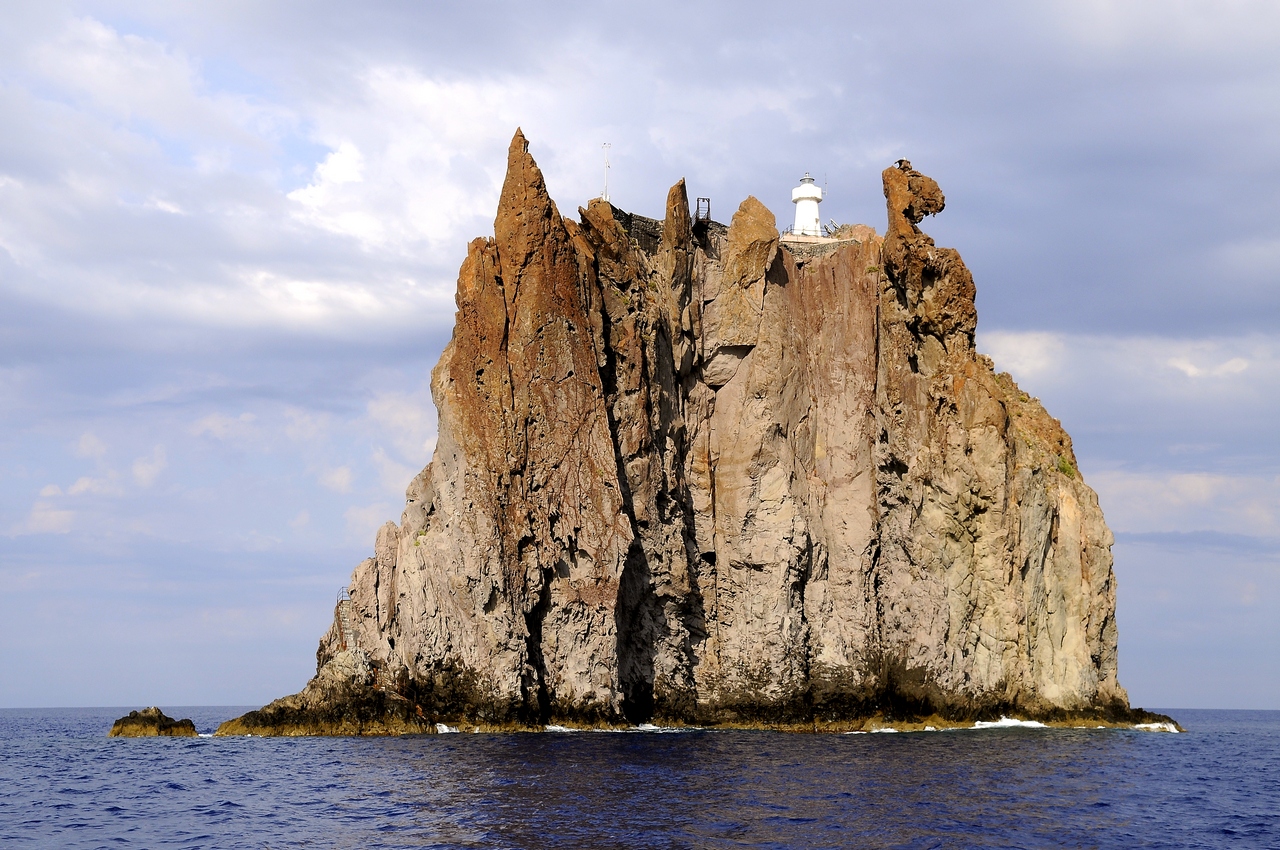
Riserva naturale Isola di Stromboli
Un vulcano ancora attivo che fa da manuale nella scienza moderna. Basterà ricordare che da qui arriva il termine "stromboliano" ad indicare un fenomeno eruttivo caratterizzato da esplosioni violente con liberazione improvvisa di gas e magma.
Nonostante il nome, Strombolicchio è in realtà più antico di Stromboli. Uno scoglio imponente di selvaggia bellezza, distante un chilometro e mezzo dalla costa nord-est dell’isola, dai fondali marini ricchissimi di coralli e attinie, come il pomodoro di mare, uno strano essere (un po' fiore, un po' animale) che vive solo in acque particolarmente limpide.
La vegetazione di Stromboli comprende la granata rupicola, il Citiso delle Eolie (una pianta arbustiva rara ed esclusiva di Lipari, Vulcano e Stromboli), la ginestra di Gasparrini, il fiordaliso delle Eolie, la violacciocca rossa, l’issopo di Cosentini e il radicchio virgato di Gussone. Anche il leccio è qui presente in macchie irregolari. Il versante est è caratterizzato dalla vegetazione arbustiva a ginestre, la zona di Ginostra dalla presenza degli olivi che qui venivano coltivati.
Per quanto riguarda l’avifauna ecco la berta maggiore e il falco della regina, ma anche l’occhiocotto, il gabbiano reale, i gheppi, la calandrella, la passera sarda, il culbianco e la monachella. I fondali marini sono ricchissimi e variegati ed offrono uno spettacolo appassionante per chi ama le esplorazioni e la fotografia subacquea.
Le acque limpidissime di questi luoghi sono un vero paradiso per gli amanti delle esplorazioni subacquee che rimangono incantati dinanzi agli spettacolari fondali.
(English)
Nature Reserve Stromboli Island
A still active volcano that is a textbook in modern science. It will be enough to remember that the term “strombolian’’ comes from here to indicate an eruptive phenomenon characterized by violent explosions with sudden release of gas and magma.
Despite the name, Strombolicchio is actually older than Stromboli. An imposing rock of wild beauty, one and a half kilometers from the north-east coast of the island, with a seabed rich in corals, and sea anemones, such as sea tomato, a strange being (a little flower, a little animal), that lives only in particularly clear waters.
The vegetation of Stromboli includes the rock granade, the Citiso of the Aeolian island (a rare and exclusive shrub plan of Lipari, Vulcano and Stromboli), the Gasparrini’s broom, the Aeolian cornflower, the red wallflower, the Cosentini’s hyssop and the red chicory of Gussone. The holm oak is also present here in irregular spots. The east side is characterized by shrub vegetation with gorse, the Ginostra area by the presence of the olive trees that were cultivated here.
As for as bird specie, here is the shearwater and the queen’s Falcon, but also the Sardian warbler, the Royal Seagull, the Kestrels, the Greater short- toed Lark, the Spanish Sparrow, the Northern Wheatear and the Black-eared Wheatear. The seabed is very rich and varied and offers an exciting spectacle for those who love exploration and underwater photography.
The crystal clear waters of these places are a true paradise for lovers of underwater exploration who are enchanted by the spectacular seabed shows.